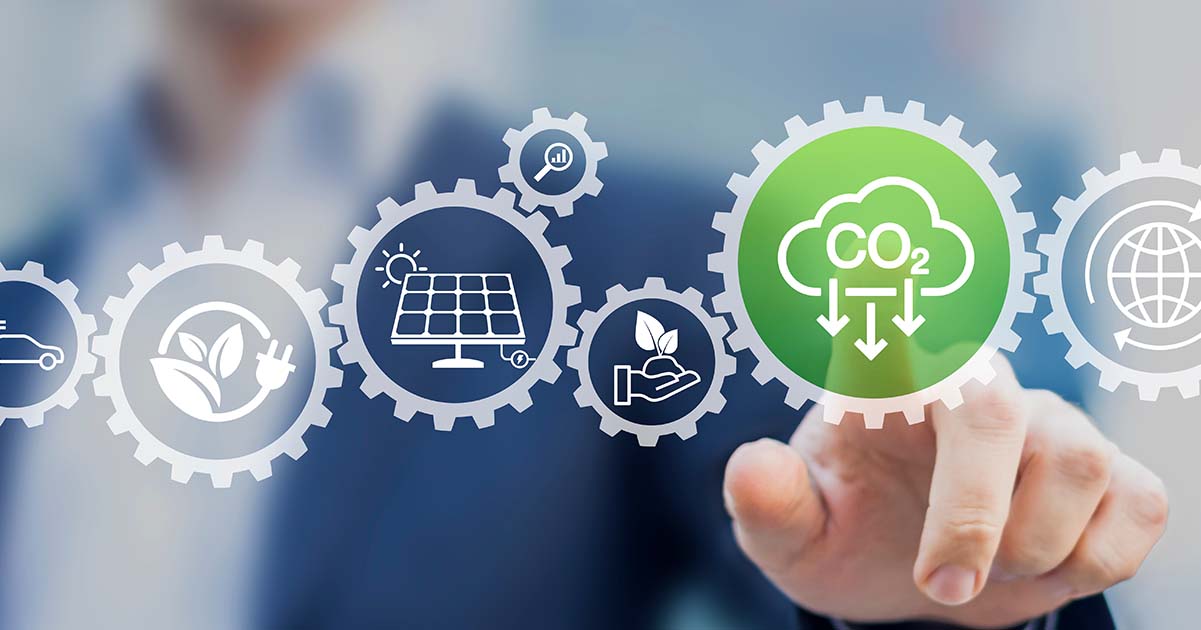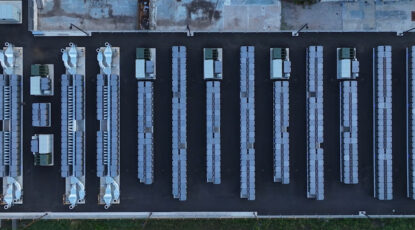Amid a global energy crisis where demand often outstrips supply, off-grid power systems are gaining significant traction. The limitations of traditional grid power, such as capacity constraints, lack of transmission infrastructure in remote areas, and the increasing electricity demand, have pushed many companies towards exploring alternative off-grid solutions. This shift toward off-grid power is not driven by convenience; it’s in critical response to the evolving landscape where energy independence is pivotal.
Traditional grid energy systems, designed many decades ago, are now struggling to keep up with the modern world’s voracious energy appetite. In other cases, especially in developing countries or remote locations, the infrastructure for grid power is underdeveloped or nonexistent. This gap in energy access has propelled a movement towards off-grid solutions, highlighting the importance of alternative sustainable energy sources.
Off-grid power systems, which generate electricity independently of the central grid, offer a viable power generation system alternative especially in places where extending the main grid is economically impractical or environmentally unsustainable. This shift to off-the-grid power is also a response to the increasing occurrence of power outages, driven by aging infrastructure, extreme weather events, and other factors affecting the reliability of grid power.
Additionally, the transition towards off-grid power systems is fueled by a growing consciousness about the environmental impact of traditional energy sources. Reducing the overall carbon footprint and advancing decarbonization has become a priority for many enterprises, and off-grid sustainable energy systems like solar power systems, wind energy, and microgrid installations offer a more eco-friendly and cost-effective solution. These systems not only alleviate the pressure on the main grid but also contribute significantly to reducing the dependency on fossil fuels, thereby mitigating the adverse effects on the environment.
The rise of off-grid power systems reflects a broader societal shift towards sustainability and resilience. As technology continues to advance, these systems are becoming more efficient, more affordable, and more accessible, enabling companies and communities to decarbonize and take control of their energy needs, paving the way toward a more sustainable future powered by renewable energy.
The History of Off-Grid Solutions: From Diesel Generators to Modern Alternatives
Historically, diesel generators have been the mainstay of off-grid power systems, especially in scenarios where traditional grid power is inaccessible. These off-grid power generators have also been the backbone for generating electricity in remote locations, thanks to their reliability and robust power output. In regions where establishing grid energy infrastructure is impractical or cost-prohibitive, diesel generators have provided a critical energy source.
However, the use of diesel generators comes with significant drawbacks. First and foremost among these is their high carbon footprint. These off-the-grid power generators rely on fossil fuels and are known for emitting a substantial amount of greenhouse gasses, contributing negatively to the environment. The = impact of diesel generators on the environment extends beyond carbon emissions; they also contribute to air and noise pollution, making them less favorable in environmentally sensitive areas, like wetlands, coral reefs, or endangered species habitats.
In addition to environmental concerns, diesel generators pose economic challenges. The cost of diesel fuel is subject to market fluctuations, leading to unpredictable operational costs. In remote or isolated communities, where fuel transportation can be difficult and expensive, relying on diesel generators can be particularly costly. The maintenance and operational costs associated with diesel generator off-grid power generators can also be substantial, involving ongoing servicing, repairs, and replacement of parts, which adds to the total cost of ownership.
Recognizing these issues, there has been a growing interest in exploring more sustainable and efficient off-grid power solutions. This shift is driven by the desire to reduce the carbon output of energy systems and to find more cost-effective, predictable, and reliable clean energy alternatives to diesel generators. The search for sustainable solutions has led to increased investment in renewable energy sources like solar power systems, wind energy, and micro hydropower systems. These systems not only offer a greener alternative but are increasingly used in high-demand applications such as data center power, promising a more stable and potentially less expensive energy supply in the long term.
The transition away from diesel generators towards renewable off-grid power solutions reflects a broader global commitment to reducing reliance on fossil fuels and mitigating environmental impact. It aligns with the growing trend of pursuing energy independence through sustainable and renewable energy sources, marking a significant shift in how businesses worldwide approach energy generation and consumption in off-grid settings.
Harnessing Wind: Potential and Pitfalls
The history of wind power is a testament to human ingenuity in harnessing natural forces. The use of wind for mechanical power dates back to ancient civilizations, where it was primarily used for grinding grain and pumping water. The late 19th century marked a pivotal moment with the advent of the first electricity-generating wind turbines. Since then, wind power has evolved significantly, with modern turbines becoming symbols of renewable energy and technological advancement.
Today’s wind power systems are a far cry from their historical predecessors. Modern wind turbines are off-grid power generators designed to maximize efficiency and adaptability. They can be scaled to fit a variety of needs, from small, off-grid residential setups to large-scale, community-based projects. These turbines transform kinetic energy from the wind into electrical energy, contributing to the grid power or serving as standalone off-grid power systems.
The efficiency of modern turbines is a result of decades of research and development in aerodynamics, materials science, and energy conversion technologies. This progress has made wind power a cornerstone of renewable energy strategies, playing a crucial role in achieving energy independence and reducing the carbon footprint of energy production.
Despite its many advantages, wind power comes with its share of challenges. Its most significant limitation is the variability of the wind itself. Wind conditions can be inconsistent and unpredictable, making wind power a less reliable sole energy source compared to other renewable energy sources like solar power systems. This intermittency necessitates the integration of energy storage solutions or backup power systems to ensure a stable energy supply, especially in off-grid setups.
Another challenge is the initial investment required for wind power systems. Setting up wind turbines involves not only the cost of the turbines themselves but also the expense of land acquisition, infrastructure development, and installation. The larger the scale of the wind power project, the higher the initial cost, which can be a barrier for some communities and individuals.
As well, the installation of wind turbines can have environmental and social impacts. The requirement for significant land space can lead to habitat disruption, and the visual and auditory presence of turbines can be a concern for local communities. Additionally, wind turbines can pose a threat to birds and bats, leading to concerns about biodiversity conservation.
Wind power, with its ability to generate electricity through renewable means, remains a vital component of the global shift towards sustainable energy systems. Its evolution from a historical power source to a modern off-the-grid power solution underscores its potential to contribute significantly to reducing our reliance on fossil fuels. However, the challenges it faces, including variability and high initial costs, must be addressed through continued innovation and supportive policies.
Solar Energy: A Bright Prospect
The story of solar power is one of innovation and adaptation. The discovery of the photovoltaic effect in the 19th century laid the foundation for solar power. However, it wasn’t until the mid-20th century that solar cells were developed for practical applications, initially powering space satellites. Over the decades, advancements in solar-powered technology have dramatically improved efficiency and reduced the cost of solar panels, making solar power a viable option for widespread use.

Today, solar power systems, harnessing energy through photovoltaic cells, stand as a source of renewable energy independent from fossil fuels. These systems are highly adaptable and scalable, fitting various needs from small, off-grid residential setups to large, grid-tied systems. The adaptability extends to diverse geographical locations, making solar power a versatile off-grid electricity option in areas not served by traditional grid power.
The scalability of off-grid electricity options like solar power systems allows them to be customized to meet specific energy requirements, whether it’s for a single home or an entire community, contributing effectively to reducing the carbon footprint of energy consumption.
Despite its advantages, solar power faces its own set of obstacles. The most prominent is its dependence on sunlight, which means solar panels cannot produce energy at night and have reduced efficiency during overcast conditions. This intermittency necessitates the integration of robust battery storage solutions to ensure a continuous power supply, which can be a significant factor in the overall cost and complexity of solar power systems.
Another concern is the environmental impact associated with the production and disposal of solar panels. The manufacturing process involves the use of hazardous materials and consumes a considerable amount of energy. Additionally, at the end of their lifecycle, the disposal of the panels poses challenges due to the materials used in their construction.
Despite these challenges, solar power remains a cornerstone of sustainable energy systems, offering a clean, renewable source of power. Ongoing research and development are focused on creating more efficient solar panels, improving battery storage technology, and developing more environmentally friendly manufacturing and recycling processes. Although challenges like dependency on sunlight and environmental concerns exist, the advancements in technology and increasing efficiency make solar power a critical player in reducing our reliance on fossil fuels and moving towards a cleaner, more resilient energy future.
The Evolution of Fuel Cells: Pioneering a Sustainable Energy Future
The concept of fuel cells dates back to the 19th century when scientists first discovered the principles of electrochemical energy conversion. Then in the mid-20th century, particularly during the space race, fuel cells found significant applications, providing power in space missions. Over the years, advancements in materials and technology have transformed fuel cells into a viable option for various applications, including off-grid power systems.
Fuel cells represent a revolutionary leap in off-grid power technology. Each fuel cell generates electricity by converting chemical energy directly into electrical energy, these devices embody a clean and efficient energy conversion process. Unlike traditional combustion-based energy sources, fuel cells generate electricity through an electrochemical reaction, offering a more efficient, reliable, and sustainable power source. This technology aligns perfectly with the global pursuit of renewable energy and reducing the environmental footprint of energy systems.
Solid Oxide Fuel Cell (SOFC) microgrids, such as those pioneered by Bloom Energy, are at the cutting edge of off-grid power technology. SOFCs operate combustion-free and use a solid oxide electrolyte to facilitate the electrochemical conversion of fuel into electricity. This high-temperature operation enhances the efficiency of the fuel cells and allows for the use of a variety of fuel sources, including natural gas and biogas.
Bloom Energy Servers® utilize SOFC technology to deliver scalable, clean, and dependable off-grid power. These systems mark a significant advancement in fuel cell technology, offering a versatile energy solution adaptable to various environments and fuel types. The efficiency of Bloom’s SOFC microgrids not only ensures a more stable energy supply but also contributes to a significant reduction in the total cost of ownership. Their ability to minimize environmental impact while providing reliable power is a testament to the potential of fuel cell technology in modern energy systems.
SOFC microgrids present numerous advantages over conventional off-grid power systems like diesel generators, wind turbines, and solar power. One of the most significant benefits is their consistent and reliable power output, irrespective of external conditions such as weather or time of day. This makes them an ideal solution for areas where energy reliability is paramount.
Additionally, SOFC microgrids align with the increasing global focus on reducing environmental impact and achieving energy freedom through sustainable means. In a global context increasingly focused on reducing carbon footprints and mitigating environmental impact, SOFCs offer a greener alternative. Their efficient fuel-to-electricity conversion process results in lower emissions compared to traditional fossil fuel-based power generation methods. This shift towards more eco-friendly energy sources is integral to global efforts aimed at environmental conservation and sustainable development.
The efficiency of SOFC microgrids is also unparalleled. Their ability to directly convert chemical energy into electrical energy minimizes energy loss, making them more efficient than conventional energy conversion methods. This heightened efficiency leads to reduced operational costs over time, positioning SOFC microgrids as a leading cost-effective solution for long-term energy needs. And the scalability of these systems ensures that they can be tailored to meet specific energy demands, from small-scale residential needs to larger industrial applications.
SOFC microgrids represent not just an alternative in the array of off-grid power solutions but a progressive step towards a future where energy generation is more sustainable, reliable, and efficient. As we navigate the evolving needs of our energy landscape, SOFC microgrids stand as a beacon, guiding us toward a future that embraces environmental responsibility.
Off-Grid Power Systems FAQs:
What is the best off-grid power source?
The best off-grid power source depends on location, power needs, and environmental considerations. Solar and wind are popular because they are renewable, while fuel cells like Bloom Energy’s solid oxide fuel cells (SOFCs) offer high efficiency, reliability, and scalability. Hybrid solutions combining solar, wind, and fuel cells can provide a steady power supply with reduced reliance on any single source.
What is the best way to get electricity off the grid?
Generating off-grid electricity can be done through various methods, including solar panels, wind turbines, and on-site power generation solutions. Bloom Energy’s technology, for example, is particularly effective for consistent, high-demand power needs due to its efficiency and independence from fluctuating weather, making it ideal for stable, continuous off-grid energy.
What does off-grid power mean?
Off-grid power refers to energy systems that operate independently of the central electrical grid, often in remote or underserved areas. This autonomy provides energy independence and resilience, especially valuable where grid access is unreliable or unavailable.
Ready to explore how Bloom Energy’s innovative off-grid solutions can elevate your energy strategy? Our team of energy experts can help you tailor a solution to meet your specific needs. Together, let’s power a more sustainable and resilient future. Contact Bloom Energy to start your journey towards efficient and reliable energy management with Bloom Energy.



